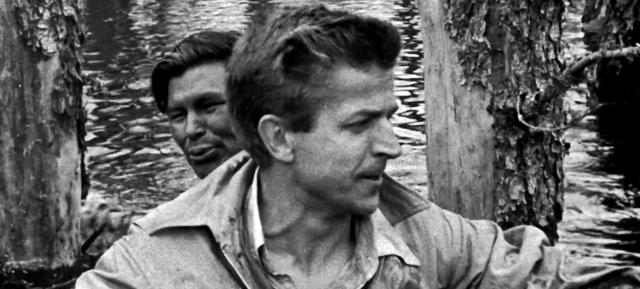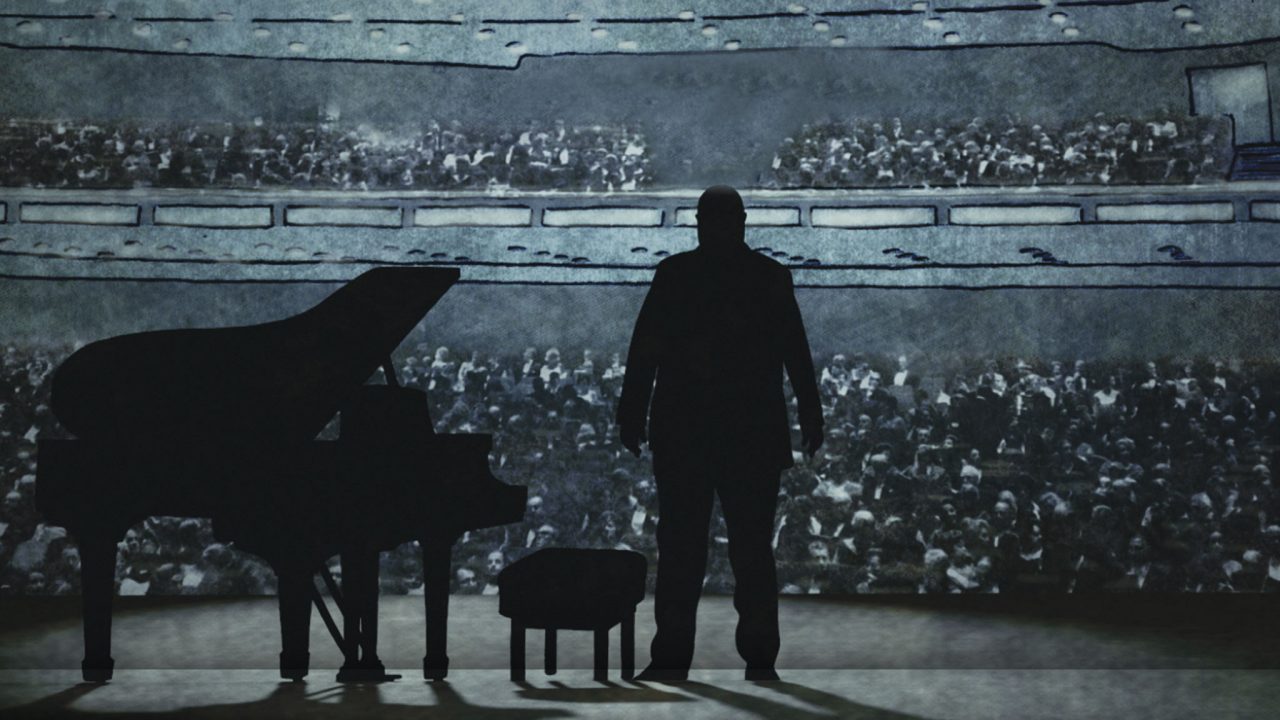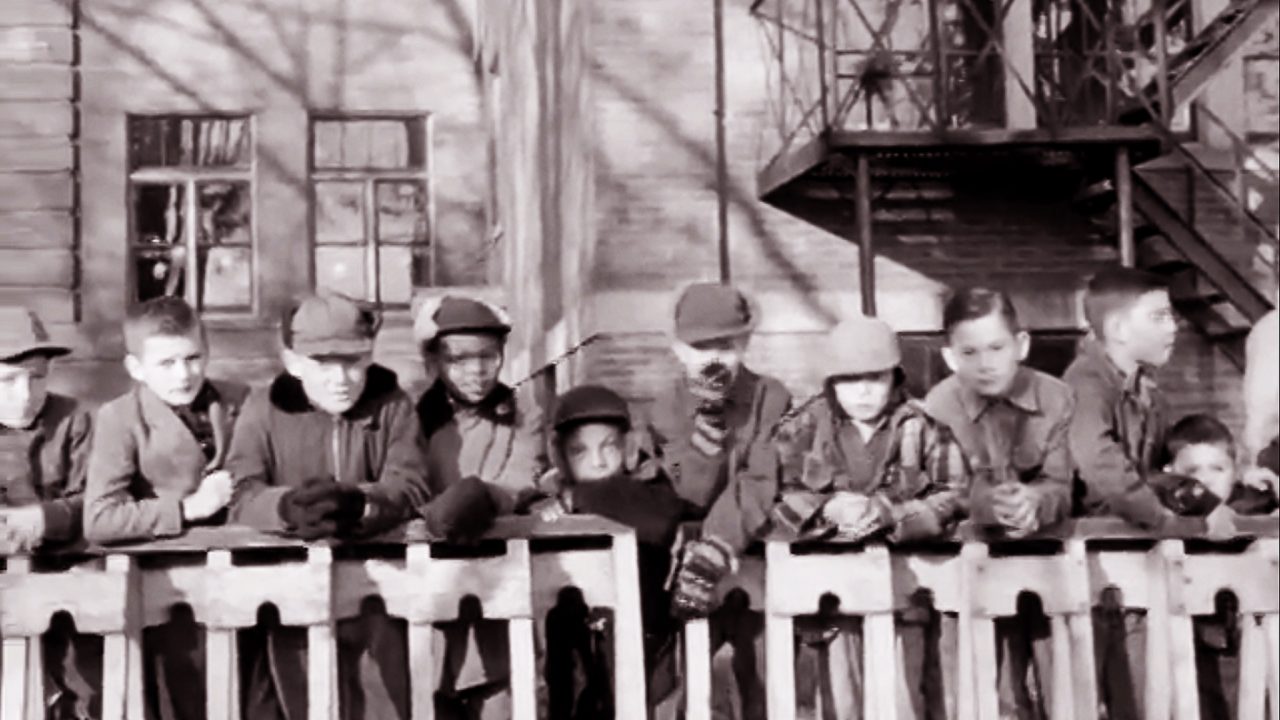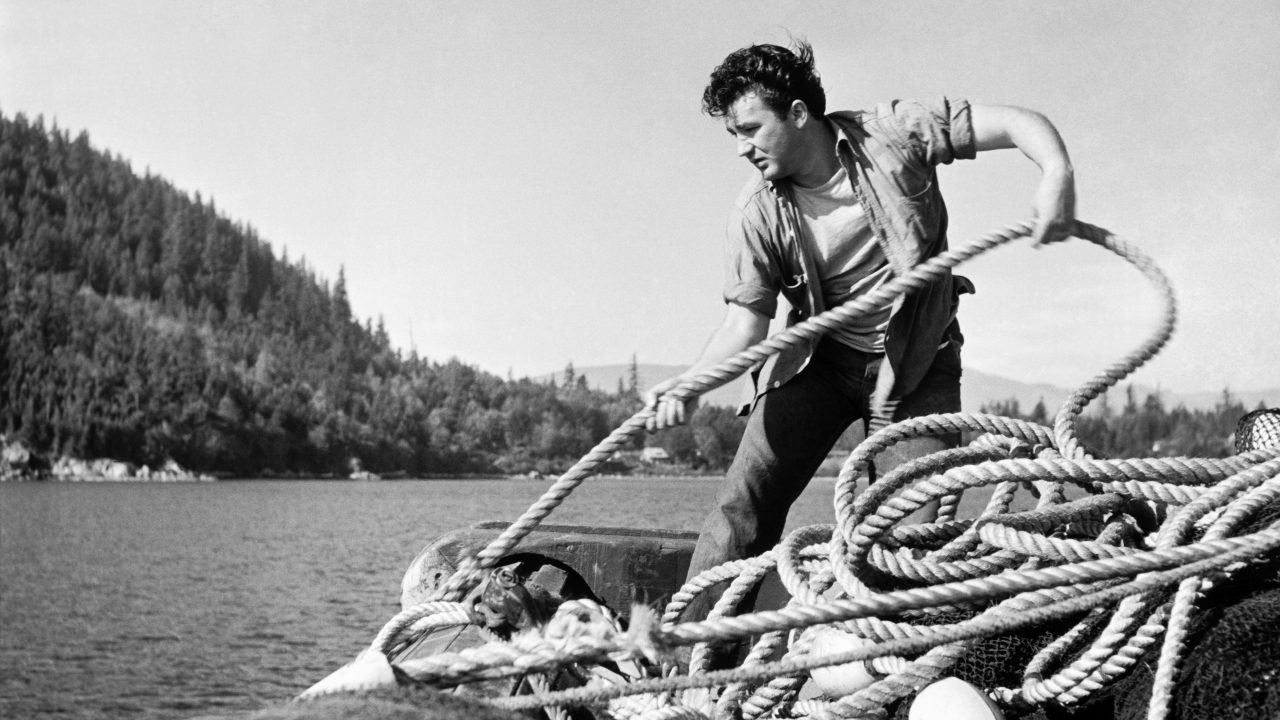
Watch the Grandpa of All Survival Shows: Survival in the Bush
Watch the Grandpa of All Survival Shows: Survival in the Bush
Either you’re avant-garde or you’re not. Two decades before Bear Grylls was even a twinkle in Mr. Grylls Sr.’s eye, the NFB was already getting lost and surviving in the wilderness for the entertainment (and possible edification) of TV audiences.
The resulting piece is Survival in the Bush, a thrilling half-hour program the NFB released in 1954. Made for On the Spot, the NFB’s first documentary series made specifically for television, the film follows host Robert “Bob” Anderson as he is taken by canoe to a remote corner of the Quebec bush, dunked into a swamp and abandoned. His challenge? To survive in the wilderness armed with nothing but an axe and hopefully make his way out. Failing the latter, a crew of paddling “judges” promise to come to his rescue and pull him out, 3 weeks hence.
Anderson, who is young and intense and bears a passing resemblance to Hugh Jackman (the hair, at least), is far from alone in this adventure. With him are a cameraman, and more crucially, Angus Baptiste, an Algonquin jack-of-all-trades without whom it soon becomes apparent Anderson wouldn’t have survived a day.
Much like Grylls, who was busted for sleeping in a motel when he was supposed to be roughing it on a “desert island,” or for leading viewers to believe he was intrepidly lassoing wild mustangs when the animals he was roping were actually tame specimens from a local pony-trekking operation, all is not quite what it seems in Survival in the Bush.
One gets a sense of this early on, especially in segments involving the cameraman. In the first case, Anderson, already chest-deep in the swamp, informs us that the next splash we’ll hear is the camera guy leaping from canoe to water. This would make perfect sense if the camera wasn’t already filming Anderson – at water level.
Later on, Anderson tells us the man we see gathering spruce branches for bedding is the cameraman. Fair enough, but who’s filming then? Before one can consider the possibility that the camera was put down on a rock, and is shooting away unmanned, the camera moves and the lens focuses, tracking the action.
Truly enjoying this quirky short, then, calls for a temporary suspension of disbelief. Lord only knows how many people are actually playing Robinson Crusoe on that “forsaken enough” patch of Quebec hinterland, and no one can prove that the whole lot of them don’t sleep in a cozy chalet at night, mere steps from the rudimentary lean-to, but as the film progresses, these little details pale in importance. What shines through – and brightly so – is Angus Baptiste’s very real woodsmanship. Forget the dubious set-up and shenanigans: this man’s skills are mesmerizing.
Do you know how to build a fire without matches, catch fish without gear, or set bear traps and rabbit snares? Just sit back and let Angus show you. (All the while, Anderson stands by his side, clutching a skinny handheld mic attached to a long, snaking electrical cord. One doubts he got his hands very dirty.)
Although all these feats are decidedly impressive, Angus’ crowning achievement comes towards the end in the shape of birchbark canoe built from scratch. And not only is this canoe a thing of beauty – it floats! It floats so well, actually, that the entire crew hops on board and skedaddles out of sight.
Survival in the Bush , Bernard Devlin, provided by the National Film Board of Canada




Angus (kwitchkwa) Baptist and Arthur Smith were both from Kitigan Zibi Reserve. The film was shot at baskatong resevoir. There was no band saw used to make the canoe. It has what is called winter bark which is dark and the lighter parts were etched out. it was made at another location. It takes about a week to make a crude bark canoe but one that nice had taken some time. The only tools used were axes and awls. People were poor on the res that time. Everyone still used horses in the 50’s and only one man had a car at this time period nor did we have hydro so count the band saw idea out.This is a short film about living in the bush and was made to demonstrate some techniques.
All I could think about was how they killed the mother bear and that the little one will die a slow death.
I love the way these old announcer guy talked… extremely formal and yet poetic : “…as he runs along his familiar path, Mr. Rabbit’s going to get a surprise from this hangman’s noose..” We should bring that back.
Hey Eric,
I agree. I watch a lot of these “vintage” docs from the 50s and 60s and keep being blown away by the narration scripts. The writing is often deceptively simple yet stylish and all kinds of evocative. We should totally bring that back.
I am worried about that little cub growing bigger with the belt around his neck. Will he be able to survive when his neck grows too big for the belt?
Thanks for bringing this film to my attention. A great watch!!
Did anyone notice the nice bandsawed details on the edge of the canoe?
LOL – I also thought it looked a bit too finished to be the one Angus was building. Probably ‘in the interest of time’, they substituted a finished version but, from what we saw, there’s little doubt Angus could have finished & floated the one he was building ;-).
Angus Baptiste skill’s are amazing. Where can I find out more about him?
I love how we see the “cameraman” step into view however the camera still follows the scene. Great film and what a perfect canoe! Shame about the orphan bear though. Hope that little cub survived in the wild on his own…
As a Director/Producer at NFb for some 10 years I should let you know that we made a whole series of Survival films for the RCAF – Survival in the Bush – Survival in the Winter Bush – and otthers. This particular film was a one-off by Bob Anderson who was an early member of the NFB and an excellent researcher who main concerns were with medical subjects.
Angus skills are to admired, I would like to have them myself.